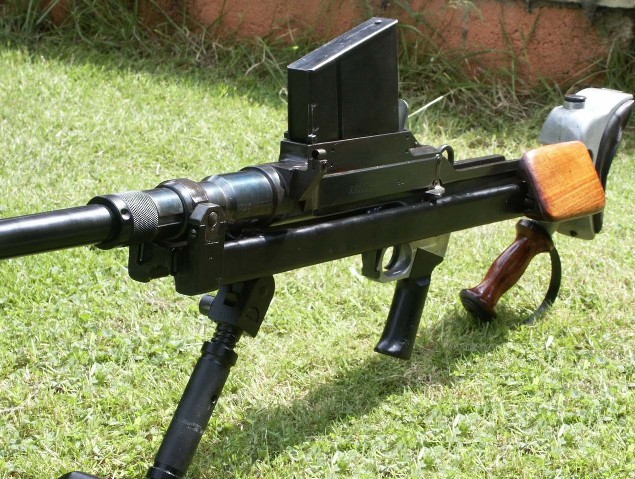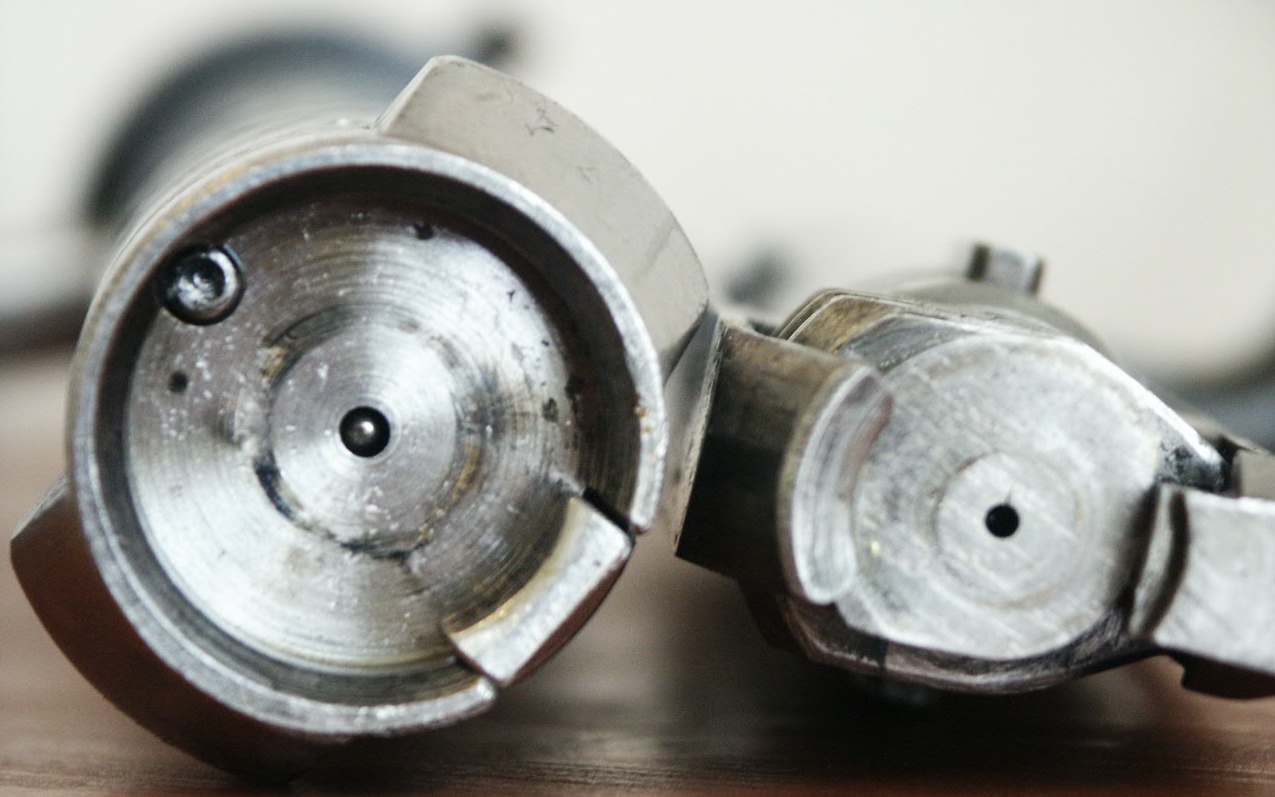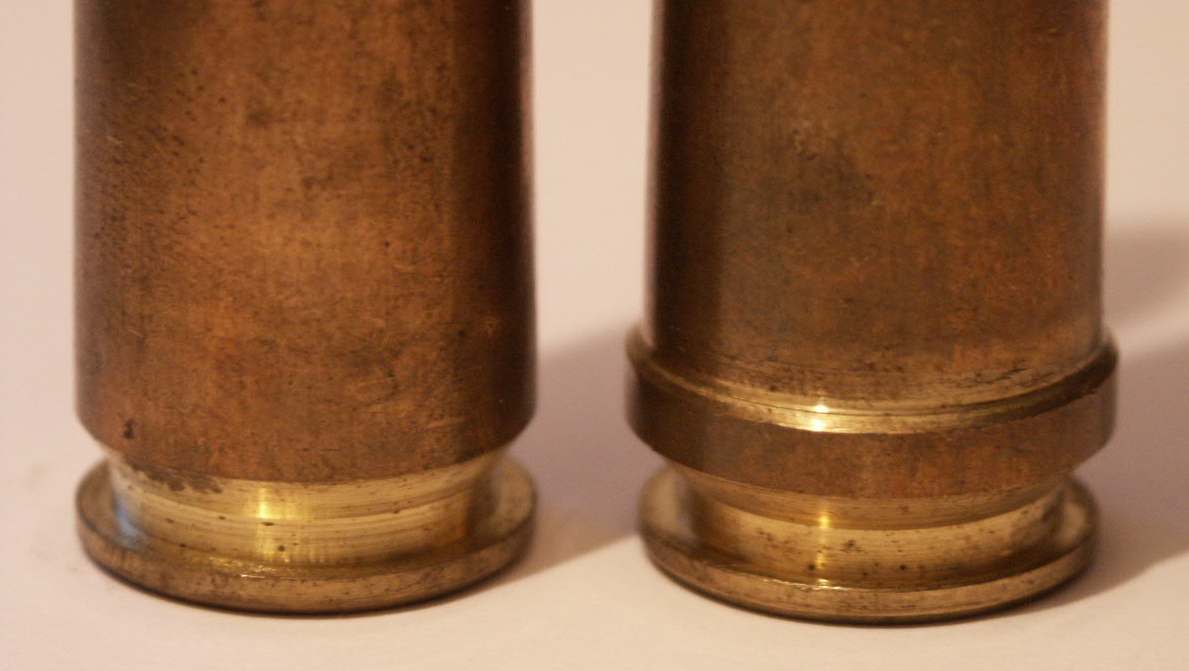 Picture of MK1 Boys converted to .50BMG
Picture of MK1 Boys converted to .50BMG.55", Boys Anti-Tank rifle. Mark 1, Mark 1*, Mark 2 (U.K. and Canada)
 Picture of MK1 Boys converted to .50BMG
Picture of MK1 Boys converted to .50BMG
The. 55 inch Boys Anti Tank Rifle
The Boys Anti Tank Rifle is a large rifle with a padded butt, pistol grip, an over-the-barrel 5 round magazine, an integrated mono-pod and oiler in the aluminium butt stock. The barrel and receiver are free to recoil approximately 1" against a large buffer spring. Early rifles had a rear sight with both a 300 yard and 500 yard setting with interchangeable sight elements, later rifles were fixed at 300 yards. Named after one of its principal designers Captain Boys, this gun was the primary anti tank weapon of British infantry until it was replaced by the PIAT shaped charge weapons in 1943. Originally called the Stanchion rifle, only a couple of minor modifications such as the lengthening of the bolt handle were required before mass production started at Enfield and BSA. It was widely used in campaigns against the Axis armies in France, Greece, North Africa and China in the early part of the war. While effective against the 1930s tanks, it was - due to its bolt-action design - slow to operate and outclassed by the heavy armour on later tanks such as the PzKpfw III. The later instruction manual (1942) states the limitations of the rifle on the first page, unlike the original 1937 edition which makes no mention of the limitations. The 1942 manual also hints at future modifications that would make MK1* and MK2 versions.
In late 1939 on the outbreak of the Winter War on the Eastern Front, international sentiment
was very much on the Finnish side. The British government donated two
hundred Boys ATRs with the express wish that thirty of them would be
given to Swedish volunteers. The rifles were a remarkable success against
Soviet tanks of pre-war design which had been built to withstand
small-arms fire only.
 Left: Boys rifle with Flat muzzle break
Left: Boys rifle with Flat muzzle break
Note the massive difference in size between the Boys bolt face (right) and the PTRD bolt face (left)

* John Inglis Company at Long Branch, Toronto. The Inglis Company employed 17,000 workers and turned out more machine guns during the war than any other individual firm in the British Empire, a total of some half-million weapons comprising of Bren guns, Browning aircraft machine guns and 38,000 .55 calibre Boys anti-tank rifles.
The Ammunition
Picture shows 1x .50BMG round and 2x .55 Boys rounds.
The dimensions of the .55 Boys case are so similar to that of the .50BMG case that it is highly likely that the Boys ammunition was evolved from the 50BMG case, the base diameter, length and diameter of the portion of the case on the upper side of the belt is exactly the same. Re-sizing a .50 case in .55 dies produces a case that will chamber easily in the .55 rifle but the angle of the slope on the case neck is slightly different and so would need fire-forming, and naturally the case needs trimming. Australian owners of .55 Boys rifles have successfully modified 50BMG cases after passing them through a .55 die, trimming the case to 3.90" and silver soldering a ring to the case to from a belt. The advantage of using these cases are that they are both plentiful and often Boxer primed.
 Boys belted case on the right.
Boys belted case on the right.
Case dimensions:
.55 Boys Case length (unfired)* 3.90” – 3.904”
Bullet, OD 0.562” [max 0.564”]
Bullet, length (AP) 1.95” - 1.963”
Belt, OD 0.850”
Section immediate above belt, OD* 0.80” [0.790”]
Base, OD * 0.80” [0.798”]
Neck, OD, measured 1/8” before case mouth (unfired) 0.601”
Neck, OD, measured 1/8” before case mouth (fired) 0.614” – 0.618”
Neck, ID, measured at case mouth (resized) 0.561”
Neck, ID, measured at case mouth (fired) 0.569” – 0.574”
*same as .50BMG)
Primer, Percussion, Kynoch No. 153A Diameter 0.317”, Depth 0.154”
Primer, Percussion, CCI No. 35 for 50BMG (for comparison) Diameter 0.317”, Depth 0.213”